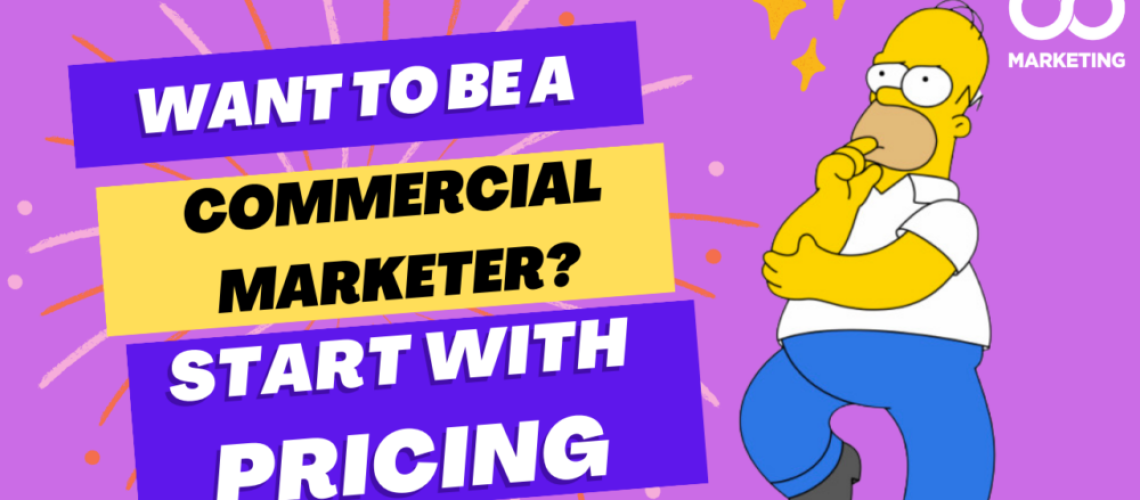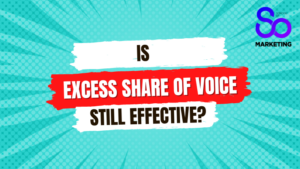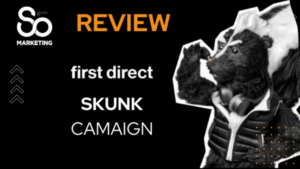Marketing is commonly associated with communications or promotions. Whilst, this is important, I would argue that marketers need to become masters of the Pricing ‘P’. It will make us infinitely more valuable and solve many of our current issues we face in our organisations and brands.
Pricing is the commercial lever that sits in the marketers toolkit, yet it’s grossly under utilised. For example, according to the latest CMO survey, Pricing in most organisations is not the primary concern or responsibility of the Marketing department; it should be!
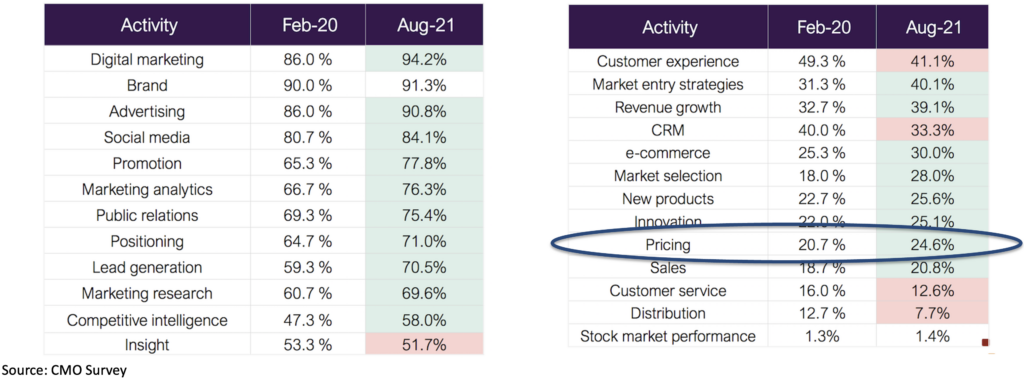
You see pricing is at the heart of every marketing decision and if used leveraged correctly it would springboard our function and brands in so many ways. Here are a few to get you excited about it’s potential:
- It would fuel a new breed of legitimacy in the boardroom
- It would position us as the Finance department’s best friend
- It would help us control and craft our own budgets rather than have them dictated to us
- It would sit front and centre of our performance marketing comms
- It would help us shape new propositions and what feeds into them
In sum, it just blows my mind why we as marketers don’t put this at the heart of everything we do. I suspect one reason is because we don’t feel equip with the skills, capabilities and knowledge and hence are not confident to lead these discussions.
If you remotely feel this way, then read on.

Ask the right pricing questions
The first step is rather than being an afterthought, you must begin every marketing conversation by asking the right pricing questions.
Here are the top 6:
- What is the gross and net margin we need to achieve with this product?
- What is the all-in and channel specific Customer Acquisition Cost we need to achieve?
- What is the acquisition target to achieve, do we have the right budget to do so?
- What is the Customer Lifetime Value for our target segment?
- What is the impact if we increase/decrease the price on demand?
- What will increasing/decreasing the price have on our brand equity (psychological aspect of pricing)?
Your job should be to first see if you can pull the pricing lever before all others to achieve your goals. A 10% price increase, may solve the commercial objective rather than a huge, expensive and uncertain marketing campaign.
Price elasticity
Now, you may be thinking if we increase prices by 10% we will lose volume and the commercial outcome could deteriorate. This is where the concept of price elasticity comes in. This is how much you can flex your pricing up or down, correlates to increases and decreases in demand/volume. I would argue that one of the primary objectives of a marketer is to actually reduce price elasticity, using the tools we have.
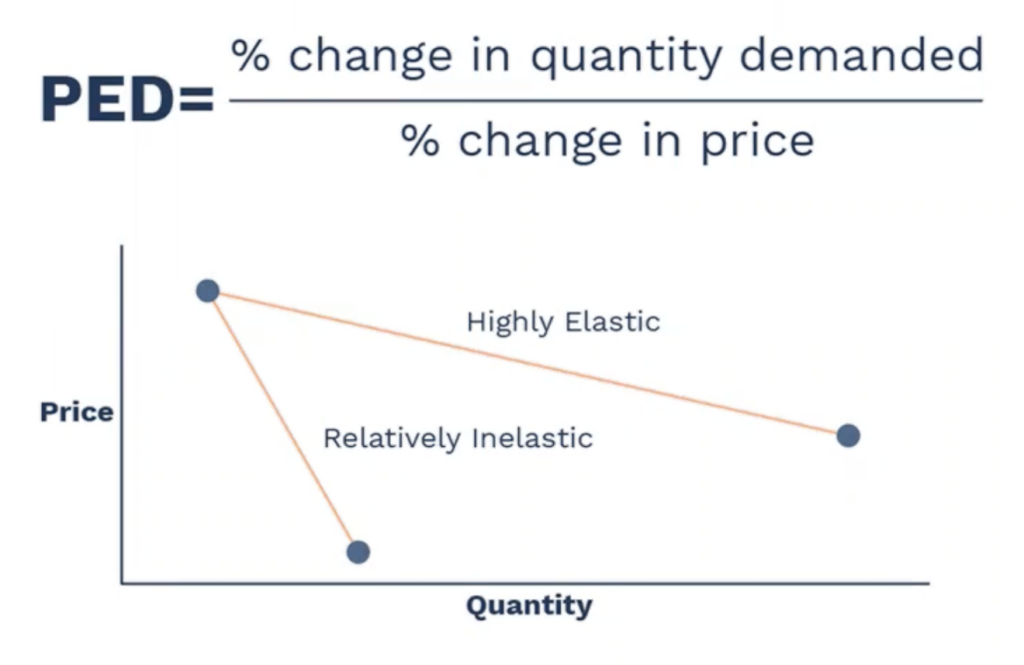
Low price elasticity means that you can increase your price without a corresponding decrease in demand to a greater extent (ofcourse it has its limits) vs high price elasticity where the opposite is true. You as a marketer need to know and understand the sensitivity for your brand and product.
When you have determined the price elasticity for your brand and product, your next question is to ask;
What needs to be true in order to reduce the price elasticity of my product/brand?
This is where you look to the other ‘Ps’ in your toolkit come in.
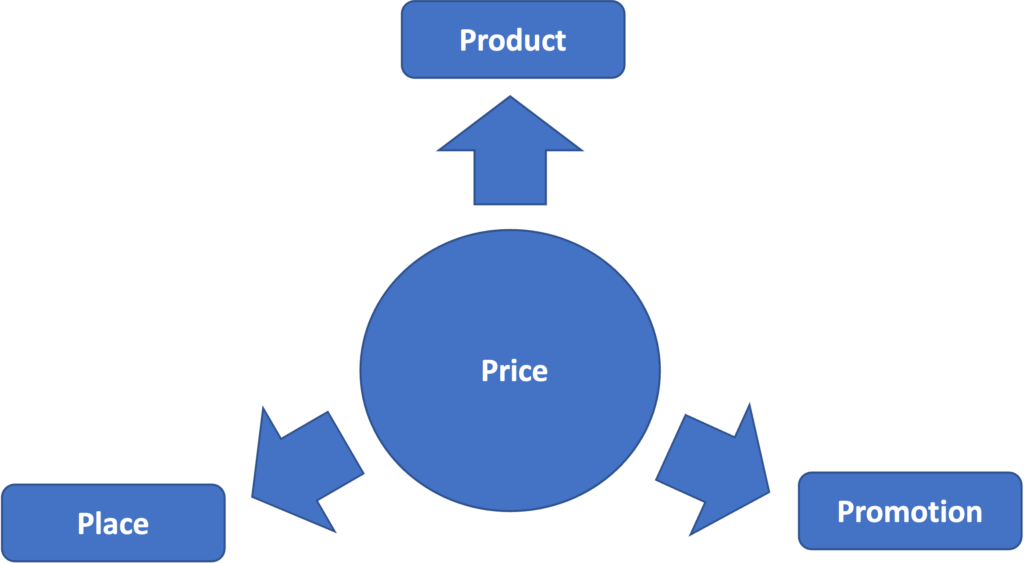
Let me use a variety of examples to bring this to life.
Product
Let me illustrate with a bar of soap and contrast a Tesco basic own brand vs Unilever’s Dove soap.

On a rational basis lets compare these two products:
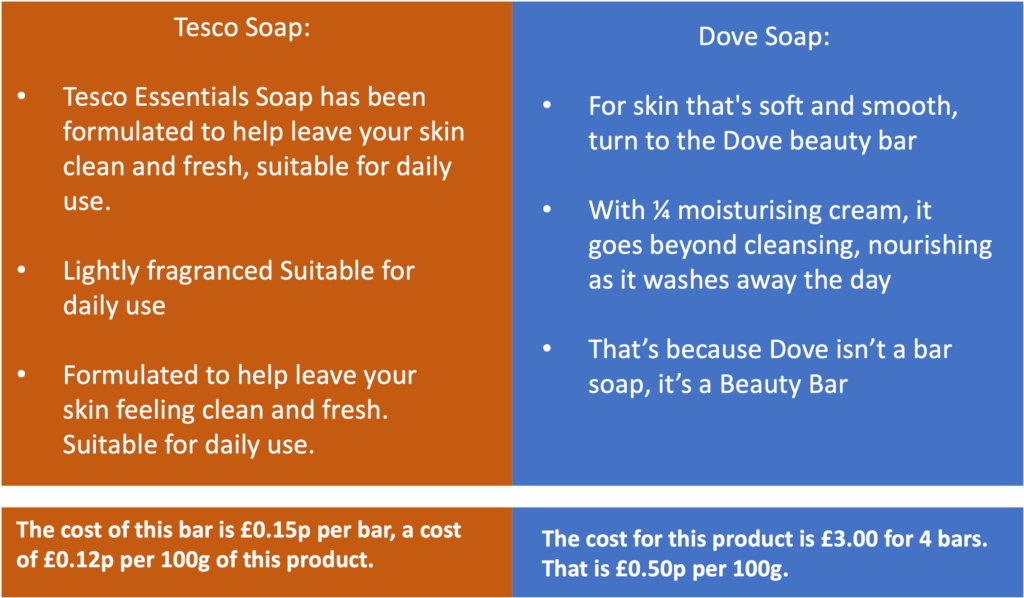
The Dove soap is able to command just over 400% more per 100g vs the Tesco essentials bar!
So we can see by adding to the features and benefits of the product we are able to increase our pricing power tremendously.
Ofcourse, the ingredients are not the only ‘magic’ of Dove, as they position themselves as a ‘beauty bar’. Let’s explore how this positioning and promotion adds value.
Promotion
Now, I’m sure we are all familiar with Dove, including the branding and positioning. In fact, their campaign for Real Beauty has gone on to be one of the most successful campaigns of all time.

So by creating a brand around a product they are able to both enhance the level of pricing compared to competitors, but also importantly be more resilience to price fluctuations and sensitivity i.e. they can increase pricing without as steep deterioration in demand compared to their competitors. This is exactly what marketers should achieve and an important measure of success.
Taking another category, a study conducted by Heinz, found this to be the case. When they invested in their brand they were able to stop a declining trend in price elasticity and were actually able to charge more.
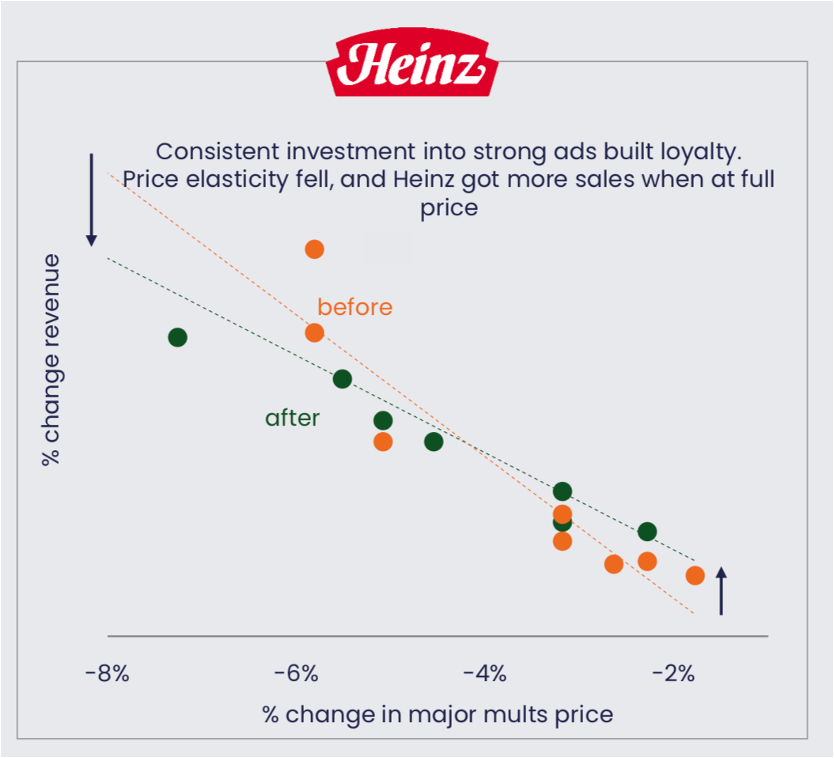
Why is this important?
It is because pricing is as much a psychological game as it is a rational one. It shows a clear signal to the audience of the type of product it is and in many cases if you get this right, increasing prices can actually improve sales as you are perceived as a higher quality offering or indeed move up the psychological ladder.
Place
Where you sell your product is an important consideration on the price you can charge. Ryanair, for instance, has been accused of charging 12 times more for the same bottle of water you get at a supermarket!
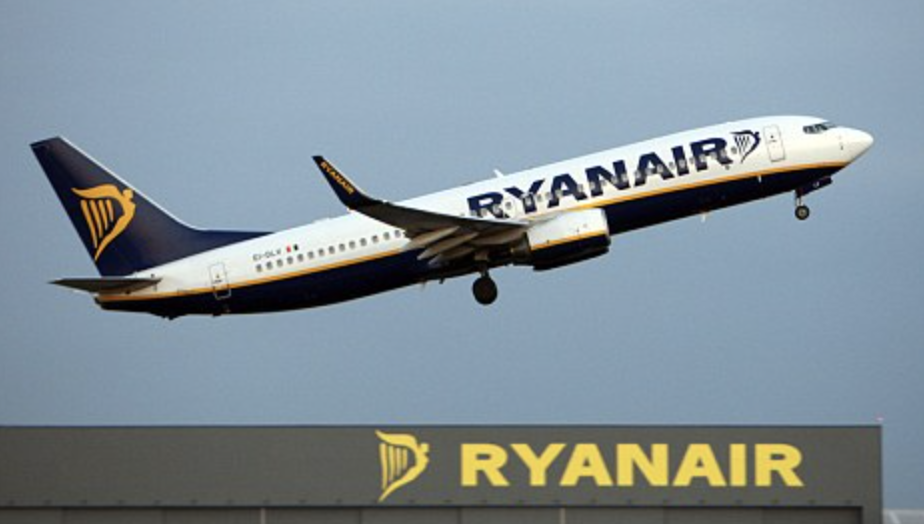
Why? Well there are a number of principles to consider.
The first is the role of scarcity. This is where there is limited supply and more demand for your product which drives the price up.
Second, the context is super important in determining how much you can charge, where consumers are willing to pay a premium based on the environment.
This brings us to another important consideration which is packaging and bundling, which has huge implications on pricing.
For instance, you may well expect to receive a bundle offer for a product in a supermarket, whilst you may expect to have your glass of water poured during a fancy meal (and willing to pay for that).
So as a marketer, we must recognise the context in which our products are being consumed and offer the right bundle and package for that context, with an appropriate corresponding price.
Price
It would be remiss of me not to mention that the very pricing strategy you adopt is also very important in reducing price elasticity. Here is a range of different pricing options you can go for:
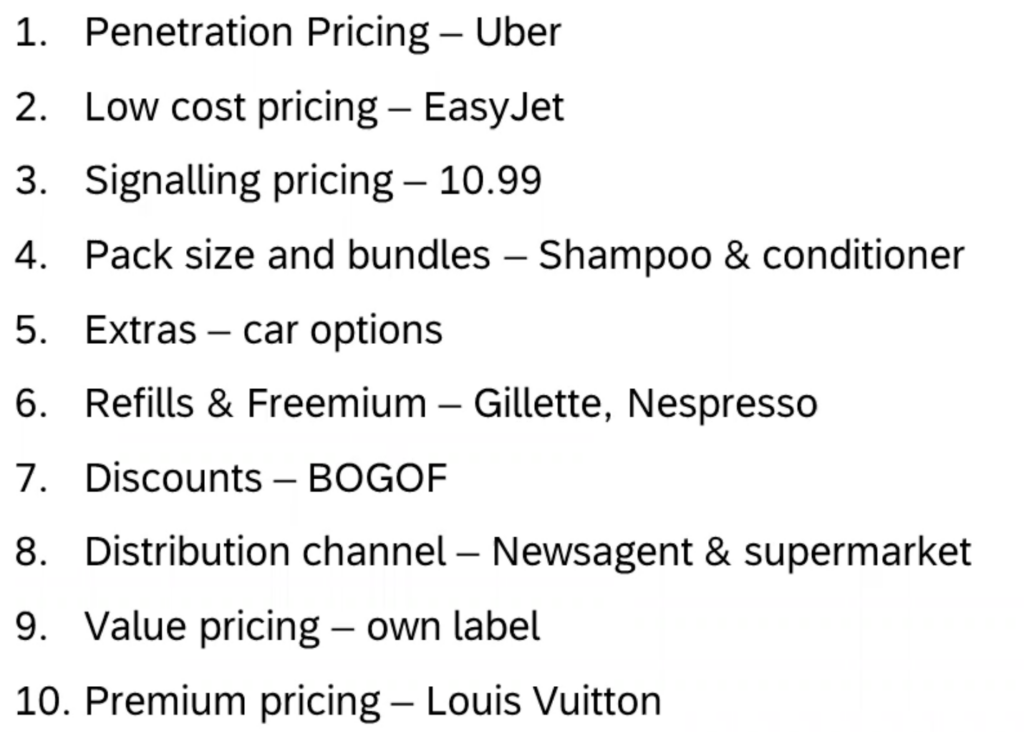
Maintaining margin and growing demand
So you can see how by starting with the pricing P it helps you build out all the other levers of marketing. In doing so, you are able to use the other levers of marketing to both maintain margin and grow demand for your brand. I would argue that those brands that adopt a more silo’ed approach to their marketing and see pricing as a separate function to marketing are far more likely to price discount, which erode margin and profitability.
After all, if you worked in the ‘pricing’ department and wanted to increase demand, you would only have one lever which is to decrease pricing!
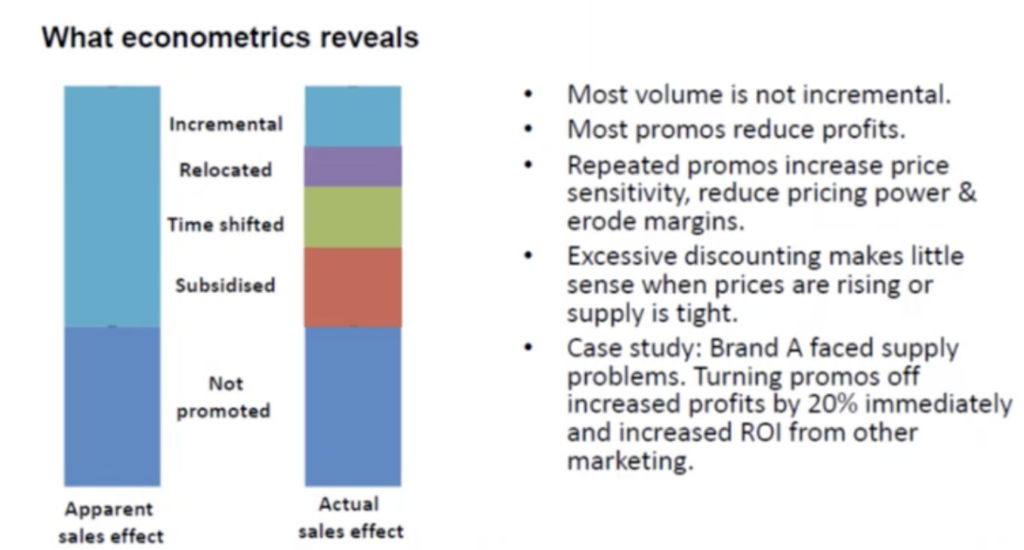
And the latest research by Les Binet, demonstrates that price discounting in the vast majority of cases is ineffective to achieve an organisation’s commercial outcomes. We can see from the table above that the incremental demand generated from price discounting is far less than first thought. It just signals that we need to ensure much more joined-up thinking across the marketing department, using all our levers in order to be truly successful but start with pricing.


